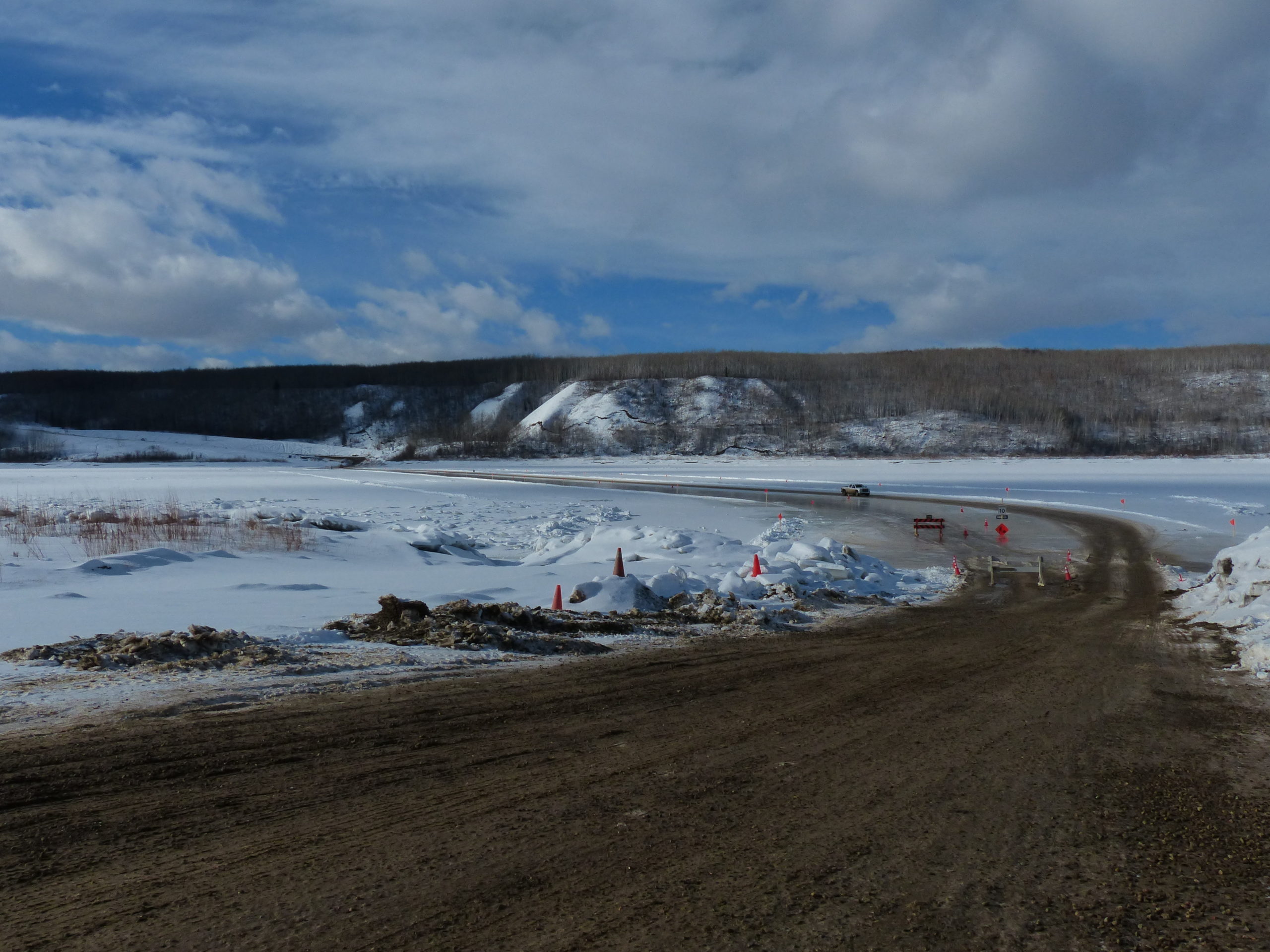Photo courtesy of Mae Stewart, P.Eng.
Too Cool: Ice Bridge Engineering
When Mae Stewart, P.Eng., completed her civil engineering degree at the University of Alberta in 2003, she never imagined that five years later she’d be helping build ice bridges in the province’s far north.
Permanent bridges? Yes. You know, the kind with concrete pillars and decks.
But ice bridges? A frozen road that crosses a river?
“Who’d have thought?” she grins.
Stewart moved to Peace River in 2008 and took on the role of operations engineer for Alberta Transportation. One of her yearly duties is working with contractors and local municipalities overseeing the safe operation of the region’s two ice bridges: a small one near the town of Peace River, and a huge, 800-metre crossing over the Peace River itself, at Tompkin’s Landing near La Crete.
She still remembers the first time she drove across the Tompkin’s Landing ice bridge, shortly after starting her new job.
“Honestly,” she says, “driving across an ice bridge is exhilarating. You’re on ice, in a vehicle, and you’re driving across it! It sounds just about as cool as it is.”
Construction of the Tompkins Landing ice bridge typically begins in late December. It’s an important transportation link for the region—without it, drivers must take a two-hour-plus highway detour.
To build the bridge, the existing ice over the river is flooded and slowly built up. When it’s about 38 centimetres thick, passenger vehicles up to five tonnes can cross the bridge.
“Construction of the ice bridge is considered finished once we reach our winter weight of 63.5 tonnes,” explains Stewart. This usually happens around the first week of February, when the ice is a solid layer, at least 127 cm thick, and can support everything from fully loaded logging and grain trucks to oilfield equipment.
Nowadays, ground penetrating radar is used for measuring ice thickness across the entire width of the river. But in the past, core samples were drilled every 20 to 30 metres, and the ice was analyzed visually.
Over the winter season, an estimated 250 vehicles travel across the Tompkins Landing ice bridge. “And by the first week of April it’s usually closed,” notes Stewart.
Ice bridge 2020: Vehicles cross the ice bridge at Tompkins Landing, near La Crete, Alberta.

Photo courtesy of Paul Catt
Ice bridge building may sound simple, but there’s an intricate science behind it.
How strong is white ice compared to blue ice? What effect do freeze-thaw cycles have on the ice? How do river currents under the ice impact its strength? How fast can vehicles drive over the ice without causing damage below the surface?
Provincial guidelines and mathematical formulas—developed by experts in ice cover safety, engineering, construction, and maintenance—cover the basic steps for the safe construction, operation, and maintenance of the province’s ice bridges and ice roads.
“If it’s an Alberta Transportation ice bridge, you know it’s rigidly tested. There’s a factor of safety built into it,” says Stewart.
In spring—usually around mid-May, once the river is clear of ice floes—the ice bridge at Tompkins Landing is replaced by a ferry. Stewart also oversees ferry operations and maintenance.
In fact, she’s working on another project she never would have imagined as a civil engineering student: helping design a new ferry to accommodate higher loads and planning a more efficient river crossing for it.
“There’s so much variety to a career in engineering—paths you have no idea about, until you actually get in it, and get exposed to it,” says Stewart. “That’s what I love about my work.”
Operations engineer Mae Stewart, P.Eng., in her Peace River office, where she oversees the safe operation of ice bridges in Peace Country.

Photo courtesy of Mae Stewart, P.Eng.


